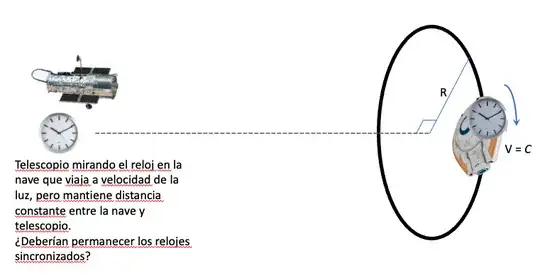Suppose a telescope can see a clock inside a ship traveling near the speed of light, in a circular (constant radius) fashion.
The telescope is at a certain distance perpendicular to the circle of the plane that describes the trajectory of the spacecraft. Right in the center of said circle.
That implies that the telescope remains to constant distance from the spacecraft. In other words, it is not traveling (it is not approaching or moving away).
If the clock in the telescope were to synchronize with the one on the ship, should the clocks remain synchronized?
